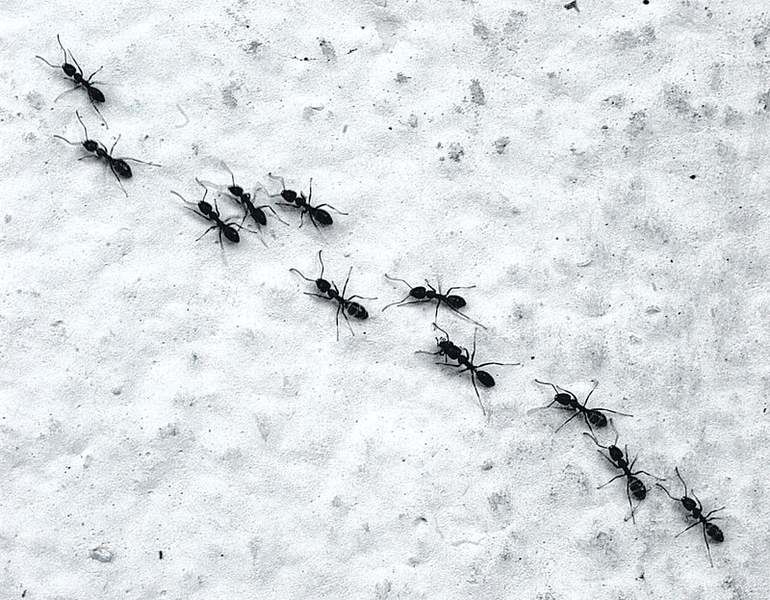Keeping black ants at bay
Published 5:00 am Tuesday, August 9, 2011

- To make your home less hospitable to ants, store all foods in airtight containers. This will encourage the ants to seek their next meal elsewhere.
Q: How can I get rid of black ants without using harsh insecticides?
A: Little black ants, Monomorium minimum, are a common household pest.
Trending
The safest and most natural way to deal with them is to make your home inhospitable to them. Keep food stored in airtight containers, and be vigilant about cleaning up dishes and crumbs on counters and taking out the trash. If you remove whatever is attracting them, the insects may eventually move elsewhere in search of other food sources. It’s also important to block possible pest entryways by caulking crevices or cracks along baseboards, around cabinets and pipes, and outside around the foundation of your home.
Boric acid powder, sprinkled into exterior crevices or mixed with sugar or syrup as bait, can be an effective poison for ants and other insects. It is less toxic than conventional poisons, but it’s not completely safe and shouldn’t be used near children and pets. Diatomaceous earth (sold in many hardware and home-supply stores) is a safer choice. Ground from the fossilized shells of aquatic organisms, this fine powder is safe for people and animals but deadly to ants and other crawling bugs. It scratches their exoskeletons, causing them to dehydrate and die.
To use boric acid or diatomaceous earth, first find the location where the ants are nesting, and then surround the area so that they have to walk through the powder when they leave the nest. If you’re not sure where the ants are coming from, place a dab of jelly or honey on an index card and leave it in a prominent spot. Watch where the line of ants leaving the feast is headed, and focus your treatment there.
If none of these methods is effective, find an integrated pest management specialist. These experts work to control pests using physical methods, as well as the least-toxic chemicals available.
Q: When I was in Montana last summer, a lot of people drank red beer, which is beer with a healthy splash of tomato juice. Is it only drunk in the Big Sky State?
A: In addition to the iconic Bloody Mary, red beer was drunk across the nation in the 1930s, after tomato juice became widely available.
Trending
Why it endured in some parts of the country and not others is a mystery.
You’re most likely to find this drink, a pint of pale lager with a shot of tomato juice, west of the Mississippi River and in the South.
Its moniker varies from place to place. If you want to order like a local, learn its regional nickname, which might be red beer, red draw, blood beer or red-eye beer. In Canada, it’s called a Calgary red-eye and often contains Clamato (tomato juice with clam broth and spices) instead of straight tomato juice.
Q: How do I protect my dog from kennel cough?
A: A vaccine is the only way to protect your pet from kennel cough, or bordetella, a highly infectious respiratory illness spread among dogs through sneezes and saliva.
Because the vaccine must be given every year, the best way to ensure that your pet is protected is to keep her shots up to date. A veterinarian administers the bordetella vaccine by injection or a spray in the nose, where it is absorbed by the mucus membranes.
Despite its name, kennel cough isn’t something your dog is likely to catch at a kennel, because reputable establishments require vaccination. What’s more likely is exposure from a neighborhood pooch whose vaccination has lapsed.
If you think your dog has been exposed to kennel cough, keep in mind that symptoms — a persistent, hacking cough and a runny nose — can take up to two weeks to surface. In the meantime, your pet can infect others, so limit her contact with them. Also, take him to the vet; your dog may need medicine to ease the symptoms, which last seven to 10 days.








